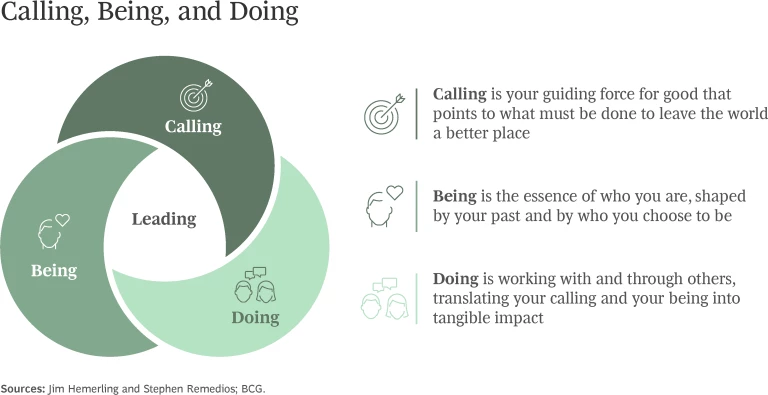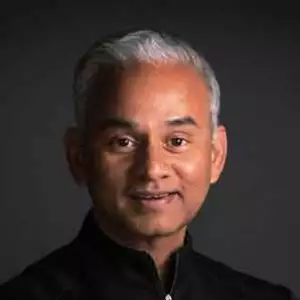Some CEOs create great companies. Far fewer forge entirely new industries in the process. Tiger Tyagarajan is among the rarest of leaders, a business process outsourcing (BPO) pioneer who transformed a division of GE Capital into Genpact.
A founding member of Genpact, Tyagarajan rose up the ranks to become CEO in 2011. Over the next 13 years, he led the company from strength to strength, increasing its annual revenue from $1.60 billion to more than $4.48 billion.
Tyagarajan stepped down as CEO in February 2024, leaving the company in the hands of a successor he helped choose along with the board. Genpact continues to grow—and so does Tyagarajan. He recently sat down with BCG senior advisor and leadership expert Jim Hemerling to talk about what brings him joy, how it informed his leadership of Genpact, and the secret to always getting more than you expect.
This interview has been edited for length and clarity.
JIM HEMERLING
Not only were you a successful CEO, but you also have the rare distinction of being a founding father of a new industry. If you had to describe the secret of that success in a single word, what would it be?
TIGER TYAGARAJAN
If you force me to pick one, I’d say “learning.” I have an insatiable curiosity and desire to learn. I grew up in a very nerdy family and used to spend my free time trying to solve physics and maths problems. No one knew I was doing it. I wasn’t trying to win anything. I didn’t get any reward for it. It was just a massive joy and victory when I solved them. When I started working, I realized I can solve problems and experience that joy more quickly by revealing my ignorance to my team and saying, “Hey guys, can we all jump in and solve this together?”
JIM HEMERLING
Did you have to wrestle with or push past any fears along the way to reveal your ignorance?
TIGER TYAGARAJAN
I’m an experimenter at heart. I’ve always been of the view that failure is not a problem. Making mistakes is not a problem. Failure and making mistakes are about learning. Dwelling on failures is a waste of time.
Failure and making mistakes are about learning. Dwelling on failures is a waste of time.
Even right out of [business] school, when I was 23 years old, I was basically put in charge of a sales team. I had never worked before and was leading a team of seven sales people who ranged in age from 35 to 59. Obviously, I was intimidated. I didn’t know anything. But I was driven and ambitious, and I was self-confident. So, on the first day, I went to the most senior person on the team—someone who had done sales for 30 years in the company and was considered God—and said, “I’m supposed to be your boss, but I don’t know anything and you know everything in this company. You know how things are done. You know how sales are done. Will you teach me?”
JIM HEMERLING
The journey of becoming a CEO is shaped by calling, being, and doing. (See the exhibit.) Along the way, many leaders struggle with the fear of being wrong, the fear of failure, the fear of being found out as an imposter, but that didn’t seem to trip you up.
TIGER TYAGARAJAN
Maybe because I’ve never, ever said to myself, “That’s what I want to become.” The world is about millions and millions of variables. Your job is to continually explore and convert the unknown variables into known variables, and to use maths, your black box, your intelligence, and pattern recognition to create a good course of action.

JIM HEMERLING
As your career evolved, at what point did you think of it—and even your definition of success—as more of a calling than just ambition?
TIGER TYAGARAJAN
I’ve never been motivated by material wealth, almost to the chagrin of my ex-boss. He’d say, “I have to find other ways to motivate you because it’s clear that money is not your motivator.”
I had the same conversation with one of our investors. He said, “You’re one of the toughest CEOs to have a compensation discussion with because you want us to decide what’s fair.” And what I found is that you will always get more than you expect. You shouldn’t ask for it. It will come.
JIM HEMERLING
Wow. Unpack that a little bit for me. How did that come about?
TIGER TYAGARAJAN
At GE, I set up and ran the consumer finance business in India. I had done a good job building that business and was ready to do other things. I had options in Hong Kong, London, and Chicago—different businesses, different roles. So I went to my boss, the one who knew money didn’t motivate me, and said, “What should I do?” He said, “Let’s go for lunch tomorrow. I want to talk to you about something else.”
Over lunch, he said, “Imagine a business where in about five years, you will lead 1,000 people, serve all the businesses of GE, and learn all the businesses.” And he got me because he knew that what motivates me is having followership. I want people to follow me. I want people to believe in me.
I ended up taking that job and built the business that became Genpact. And instead of leading 1,000 people in five years, I was leading 14,000 people in four years and serving all of GE across the globe.
JIM HEMERLING
What does “followership” mean to you and how did it come to inform your calling?
Subscribe to our People Strategy E-Alert.
TIGER TYAGARAJAN
It goes back to those early days in sales. Whether it was Unilever or Citibank or GE, when the people who worked for me moved on to do other things in the company in a leadership role, I realized that’s a superpower. Because I have become the boss without being the boss.
This is why compensation has no meaning beyond a certain point. More than 130,000 people now work at Genpact. That’s over 130,000 families. If I go back 25 years, it’s close to a million people that have been touched. I know the people because they’ve spoken to me when I’ve visited the operating centers. I’ve had people tell me, “You changed my life.” And some of those people became CEOs and leaders at other firms that are doing well.
JIM HEMERLING
So part of followership for you is developing those who follow you into leaders themselves?
TIGER TYAGARAJAN
It’s one of the things I intuitively measure in my head. The more I can say, “That person worked for me or that person worked with me,” the more joy I feel. Again, it’s only for myself. It’s not some award that’s being rolled out. But that’s something that motivates me even today.
JIM HEMERLING
What else motivates you?
TIGER TYAGARAJAN
For the past 20 years, my job has allowed me to do a lot of teaching, not only in small groups but also in large groups. So when I retired from my CEO job, I spent time with one of my board members—over multiple bottles of wine and dinner—talking about the kind of things I should think about as my next chapter. I presented a one-page document to him, a portfolio of things I want to do. He put it aside and said, “Tell me your superpower and then make sure that as you build a portfolio, every part of it has something to do with that.”
That was brilliant advice. Today, I’m in a senior advisor role at BCG and work with the [BCG CEO] Advisory. I’m part of a learning platform where I teach. I’m on the board of a management school in London. And I get joy from all of that. If I’m in a two-hour meeting with a bunch of 40-year-olds, I end up learning so much.
JIM HEMERLING
We’ve talked about your “calling,” the joy you get from developing members of your team into leaders, as well as the core of your “being,” your desire and drive to always be learning. So I’m curious how those attributes informed the “doing”—namely, your leadership of Genpact?
TIGER TYAGARAJAN
I don’t think it’s immodest to say that I process things fast. But you can only process based on the information you have. So my job was to get that information. I spent a disproportionate amount of time meeting and talking to people, often outside the company, as a way of learning and picking up new signals and new things—things that I could bring to the team and have them add to it.
JIM HEMERLING
You said a “disproportionate” amount of time. How did you manage your time as CEO?
TIGER TYAGARAJAN
The way I divided my time, I spent 50% outside of Genpact, with clients, the ecosystem, partners, etc. And I spent 25% to 30% inside the company, on things like strategy and organization, and the rest with investors, the board, compliance, regulations, and so forth.
That’s important to know because I used to tell my team, “I know we are a corporation. I know we are a New York Stock Exchange–listed company, but I wish we were a partnership.” Because really, it was a group of leaders taking decisions as a group with Socratic debate as the basis of decision making. My job was to create a group that had different perspectives, different backgrounds, different experiences. And since I was not going to spend time inside the company on X, Y and Z, I wanted strong people leading those things. I needed a strong strategy head. I needed a strong compliance person, strong operating leader, and strong CFO.
My job was to create a group that had different perspectives, different backgrounds, different experiences.
I’m a big believer in creating a mosaic. You don’t have to be the best at everything. You can be the best at two or three things, recognize that, and then fill the balance with amazing people who bring other things to the table.
JIM HEMERLING
When you say “partnership,” what does that mean to you?
TIGER TYAGARAJAN
Let’s get down to brass tacks here. I had a big argument at one point with my board and compensation committee chair about the fact that the stock and options they were giving me should be reduced and some of the people in the team should get more to strike a better balance. And the argument I got—and I knew the argument because I’d done my investigation—is that the CEO is always paid a multiple of everyone else on the team. That’s how corporate America works.
I said, “I don’t care how corporate America works. I have a view of how this company should run.” So we had that big debate. I won part of the battle. I didn’t win the whole battle. I got compensated more than I should have.
JIM HEMERLING
A team needs to execute. But at the same time, in a world of constant change, they also need to be encouraging innovation. How did you encourage that combination of innovation and execution?
TIGER TYAGARAJAN
The execution part was easy because our business was very execution-oriented with metrics galore. So, as much as possible, the focus was on exceptions. You need to allow bad news to come fast. Good news will travel by itself. And when bad news does come, don’t shoot the messenger. When something fails, do a postmortem, but do it as a blameless postmortem where the object is to learn and do better the next time.
When something fails, do a postmortem, but do it as a blameless postmortem where the object is to learn and do better the next time.
In terms of innovation, I would visit our operating centers for a week at a time, 15- or 16-hour days, and go operation by operation, spending 30 minutes in each. You can cover a lot of ground across many cities when you do that. In conversations with the teams, I would ask what they were doing and what new things they’d done. Those are not metrics or reviews. I was finding out what new ideas they were testing and what worked and what didn’t.
JIM HEMERLING
And if everything was working well?
TIGER TYAGARAJAN
Sometimes a team would say, “Tiger, everything is running so well. All the metrics are green. The client is delighted. There’s nothing to do.” So then I would go back and tell my HR leader, “Why don’t you change two people on the team? Take two of the best people and move them into difficult jobs, where they are needed. Because this team has become too stable. I want to destabilize them, so they will have to innovate. Because instability creates innovation.”
JIM HEMMERLING
So how did you inspire and energize people?
TIGER TYAGARAJAN
I’m of the view that there is very little distinction, at least in my mind, between work and life. I do not strike a work-life balance because I don’t think of it as two different things. I just love what I do and do what I love. So the conversation with all my teams was always about joy and optimism, even in the worst situations.
I also believe that in every business, you must be able to do what the people in the core of the business do. You cannot be a leader without knowing. Otherwise, you’re in an ivory tower.
JIM HEMERLING
What were two or three hallmarks of the culture that you tried to cultivate at Genpact?
TIGER TYAGARAJAN
I tried to make it a place where everyone is heard, a place where learning and curiosity are given a pedestal, a place where experimenting and making mistakes are okay—as long as you don’t make the same mistakes again and again. I wanted it to be a place where, the moment you encounter a problem, your first act is not to try to find a solution but to broadcast that you have a problem. Because there may be other people who’ve dealt with the problem and solved it, or at least dealt with the problem and figured out that they couldn’t solve it. But they know the solutions they tried, so you don’t have to try them. Finally, when someone does an amazing job, they share the credit and the learning.
JIM HEMERLING
You stepped down as CEO of Genpact last year. Will it continue to thrive in your absence?
TIGER TYAGARAJAN
I’m glad you asked that because in corporate America at least, the role of CEO is defined by what happens during a CEO’s tenure. I think that is a mistake. I do not want to be associated only with what happened to the company from 2011 to 2024 when I was CEO. I want to look back in 2028 and see a company that is doing much better than when I was there and has even changed completely. I want to say, “Hey guys, you know that person running the company worked for me. She got chosen as part of the process.”
I want to look back in 2028 and see a company that is doing much better than when I was there and has even changed completely.
When we kicked off the succession process, I was clear that I wanted the succession process to lead to that. Now, I look back and feel proud about it because that’s the definition of my success. And since I retired, the company’s done really well under the new CEO. The stock is up 35%, 38%. My son came to me the other day and said, “Dad, why didn’t you retire earlier? We would have made more money.”
JIM HEMERLING
Do you hear a new calling? Or is it an extension of the one that has led you to this point?
TIGER TYAGARAJAN
My new calling is defined as a plural life. It’s a portfolio that has many characteristics. It continues to be in the world of tech and AI and machine learning, with a little bit of edginess.
When creating that portfolio, I decided that I would only work with people I like and with cultures and values that match mine. Money is not a criterion at all because the moment you do that, lots of equations change. And right now, it seems to have worked out.






